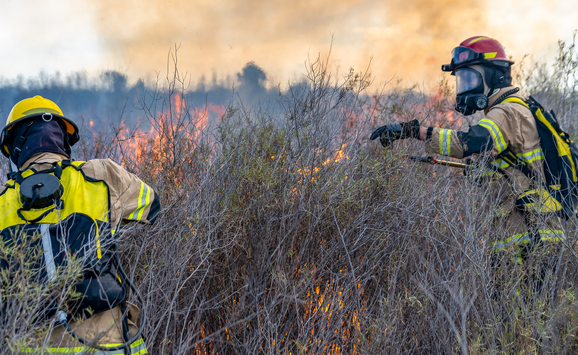Over the past several months, yet another record-setting wildfire season has unfolded across the western United States, creating anxiety among western communities and pressure on government agencies to prevent similar disasters in the future. When a fast-acting disaster strikes a community or region, there is political and emotional pressure from community residents that demands, “Don’t just stand there—do something.”
But what if the short-term imperative to “do something” is at best inefficient, or at worst, actually increases vulnerability to the threat over the long term? In a new commentary in Nature Climate Change, RFF fellow Matthew Wibbenmeyer (of this post) and interdisciplinary coauthors explore the dangers of allowing disasters to drive our short-term responses to climate change-driven threats. Looking at wildfires, floods, and insect-borne diseases, the study authors highlight the risk that society will adopt inefficient or maladaptive strategies in the aftermath of highly salient climate-driven hazards.
For instance, after wildfire ravages a community, there may be a strong push from residents to remove hazardous vegetation and debris from the forests within the wildland-urban interface. This may be inefficient, since benefits of removing these fuels may be greater in forests that have not seen recent fires. Even worse, reactions to disasters in the short term can in some cases actually increase long-term disaster risk. The US policy of aggressive wildfire suppression throughout the twentieth century was in part a reaction to the catastrophic wildfires of 1910, which burned three million acres. Over the course of the twentieth century, this policy led to a build-up of fuels in US forests, which has contributed to the recent prevalence of large and severe fires. This study points out similar examples of inefficient or counterproductive reactions to salient disasters like floods and insect-borne diseases. While flood control infrastructure decreases flooding in some areas, it can increase flooding elsewhere due to prevented water storage in flood plains. Heavy use of insecticides following a disease outbreak like Zika or West Nile Fever may lead mosquitos to develop insecticide-resistance—an unfortunate instance of unintended consequences.
In ongoing research, the study authors are working to link economic models of individual and government behavior with biophysical forest ecology models to investigate implications of short-run responses to climate-driven disasters. Specifically, the work focuses on potential costs of short-run responses to wildfire events for ecosystem services such as water provision, carbon sequestration, and forest health (see here for more information on the larger project).
Disasters need not be wasted opportunities though. Officials and local managers can find ways to productively harness human focus on the most recent, urgent disaster at the moment people are most motivated to take action. As the summer of 2018 draws to a close, the devastating fire season can be used to motivate proven, long-term approaches to minimizing wildfire damages.
Policymakers can discuss ways to reduce development in hazardous wildland urban interface areas. Officials can educate communities to direct their attentions on reducing long-term risks by reducing encroachments into forests on the wildland-urban interface, retrofitting their houses to reduce fire risk, and maintaining perimeters around their homes to reduce the spread of fire. All of these are proven effective at building long-term resilience capacity to climate-driven fire risks; they are also cost-effective. People have both the motivation and the capacity to respond to the most urgent disasters driven by climate change. They just need to channel that energy in the most useful directions.
The views expressed in RFF blog posts are those of the authors and should not be attributed to Resources for the Future.






